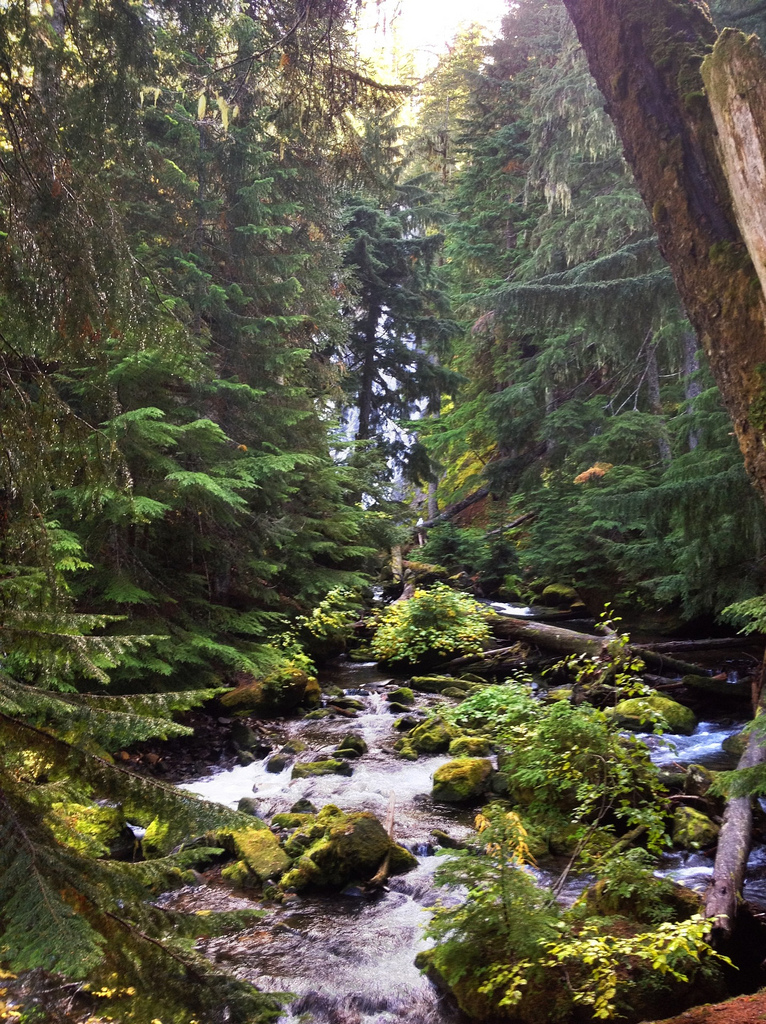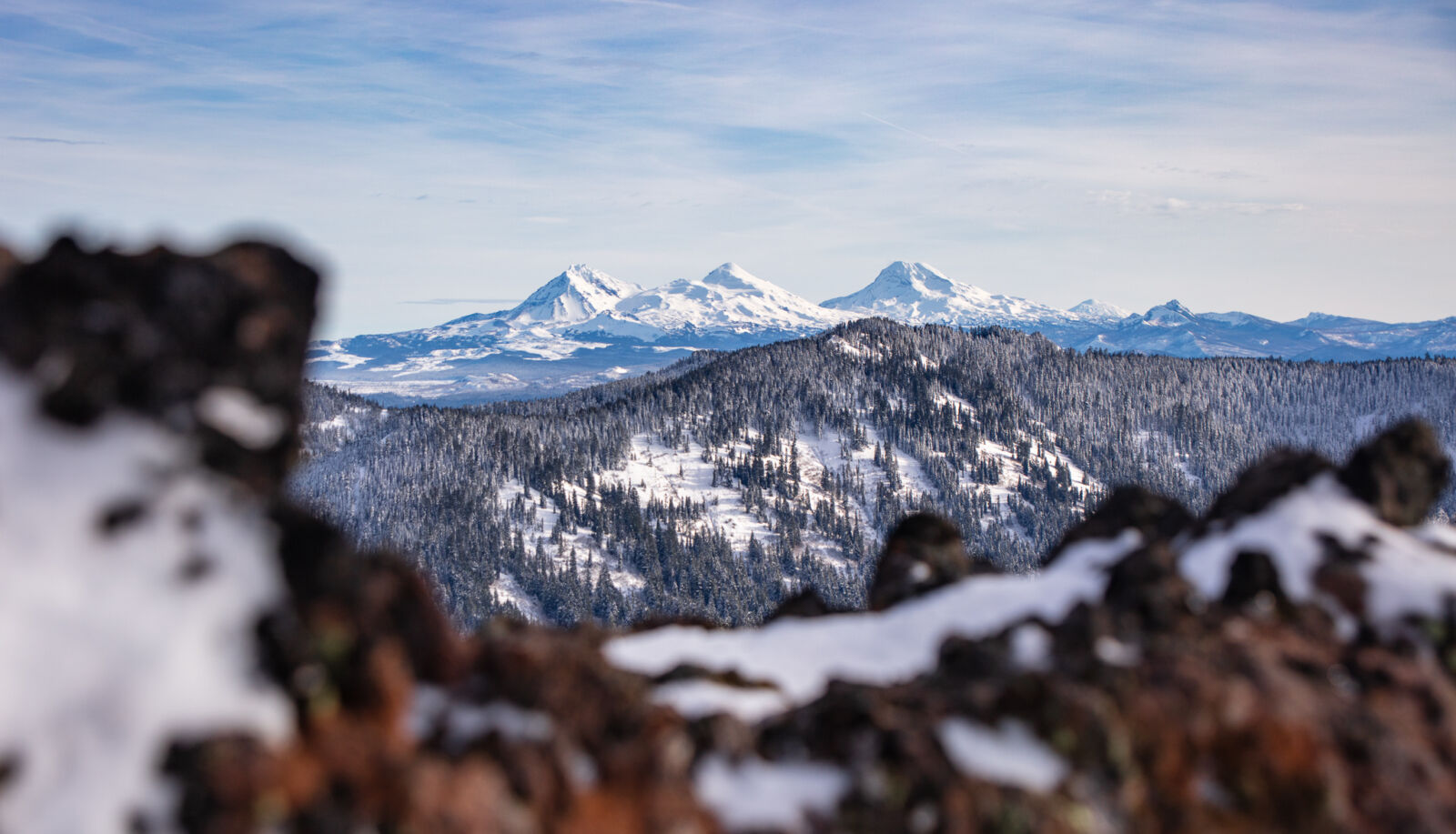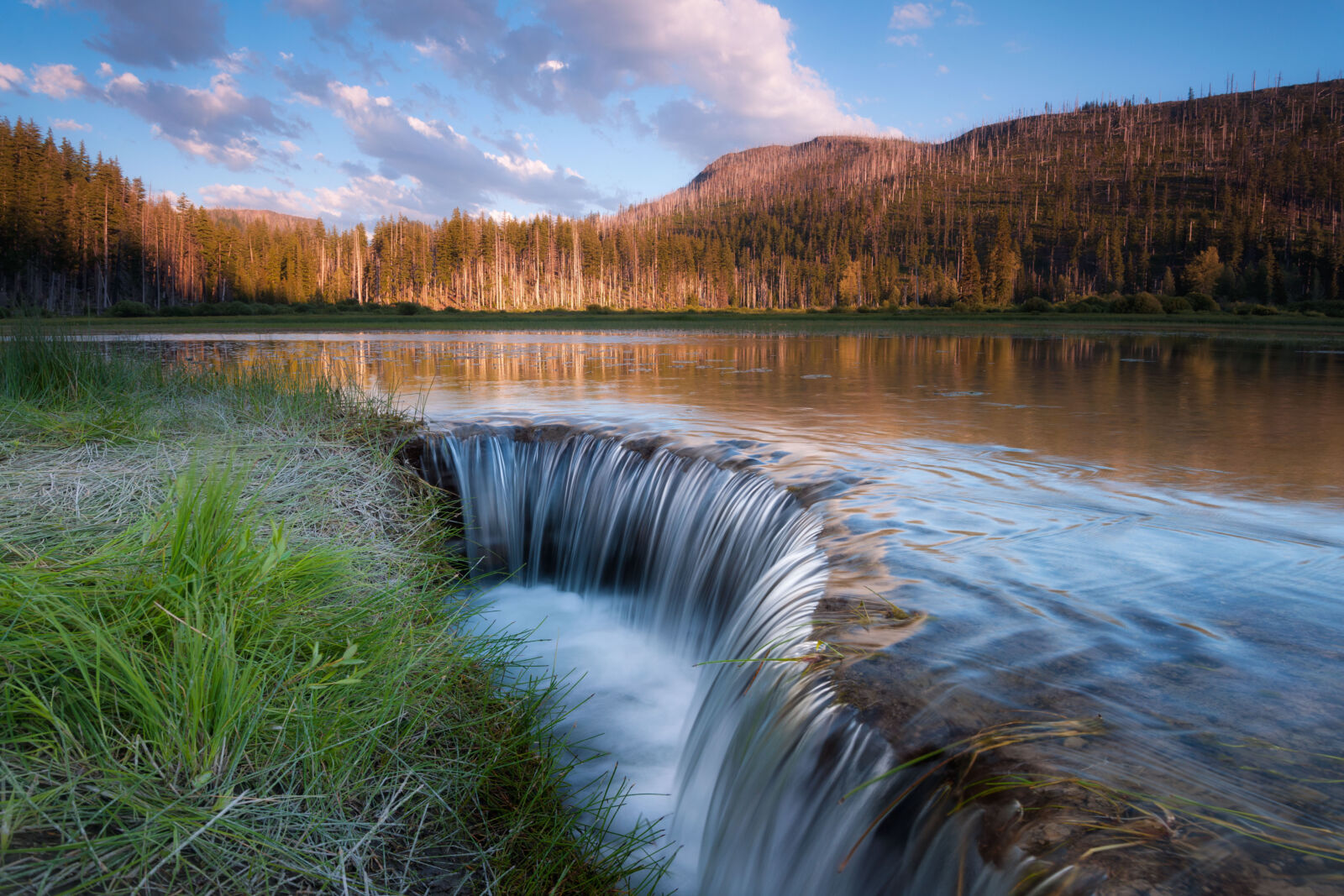Willamette National Forest
The Willamette National Forest stretches for 110 miles along the western slopes of the Cascade Range in western Oregon.
Overview
The Willamette National Forest covers an impressive swath of the Cascade Mountains in Oregon, where volcanic peaks tower above iconic Douglas firs, and crystal-clear waters crash over immense waterfalls. This forest encompasses 1,675,407 acres, and within that landscape, you will find diverse habitats, numerous recreation opportunities, and fascinating history.
At 10,495 feet above sea level, Mt. Jefferson is Oregon’s second-highest peak and the tallest point within the Forest. Six other major Cascade peaks can also be found here, including Three Fingered Jack, Mt. Washington, the Three Sisters, and Diamond Peak.
Snow covers these high peaks throughout most of the year, and the annual spring snowmelt feeds the headwaters of the McKenzie, Santiam, and Willamette Rivers. These rivers are some of the cleanest in the United States and provide drinking water for many of Oregon’s largest cities. There are more than 1,500 miles of rivers and streams on the Forest and more than 375 lakes, including many beautiful alpine lakes at elevations above 4,000 feet.

History
The landscape of the Willamette National Forest includes the traditional homelands of the Kalapuya, Yoncalla, Molalla, Cayuse, Umatilla, and Walla Walla, among many others. These Indigenous peoples are now part of three federally recognized tribes: The Confederated Tribes of the Grand Ronde, The Confederated Tribes of Siletz Indians, and The Confederated Tribes of the Umatilla Indian Reservation. Learn more about each of the tribes and their stories on their websites, or visit the Chachalu Museum and Cultural Center in Grande Ronde.
The Willamette National Forest shares its name with the Willamette River and Willamette Valley, which famously attracted American settlers to make the trek across the Oregon Trail. Starting in the 1830s, almost half a million people made the journey from the eastern United States in search of a homestead and a better life.
The forest as it is managed today was originally part of the Cascade Forest Reserve, created in 1893 by a proclamation from President Grover Cleveland. The U.S. Forest Service itself wouldn’t be established until more than a decade later. When the agency was established, the names of the various forest reserves in western states were changed to National Forests, and the Cascade Forest Reserve was divided up into four different National Forests. Further administrative changes occurred in 1933, with the Cascade National Forest and the Santiam National Forest being combined into what we know today as the Willamette National Forest.
The Willamette National Forest gained national attention in the late 1980s as the center of the debate between the logging industry and environmental groups over the endangered northern spotted owl. Since 1994, the forest falls under the Northwest Forest Plan, which led to a more holistic management of the forest to account for a wide variety of uses.

Recreation
Opportunities for day trips and overnight adventures can be found all over the Willamette National Forest. More than 70 developed campgrounds are spread across the forest’s four ranger districts, along with eight historic cabins available for rent and vast opportunities for dispersed camping and backpacking. The Willamette National Forest contains almost 1,700 miles of trail – so there are nearly endless adventures for hikers, equestrians, mountain bikers, and OHV riders.
Water activities are popular, with commercial whitewater rafting guides operating on many rivers. Anglers enjoy these same rushing waters to try to catch salmon and trout. Small alpine lakes are great for tranquil reflection, while larger reservoirs provide a place for boating and swimming. The forest is a popular destination for winter recreation as well. Two ski resorts operate under permit on the Willamette National Forest, along with numerous sno-parks, warming shelters, and ski and snowmobile trails.

Wilderness
There are eight designated Wilderness areas in the Willamette National Forest, covering 380,805 acres, or approximately one-fifth of the entire Forest. Most of these areas encompass the major peaks of the Cascades and are popular with backpackers and mountain climbers, but others protect pristine lakes and pockets of old-growth forest at lower elevations that are easier to explore.
Overnight trips into the Mt. Jefferson, Mt. Washington, and Three Sisters Wilderness Areas require a Central Cascades Wilderness Permit between June 15 and October 15. Other wilderness areas require a free, self-issued permit available at trailheads. Make sure to be aware of what activities are permitted in wilderness areas, and as always, practice Leave No Trace principles!

